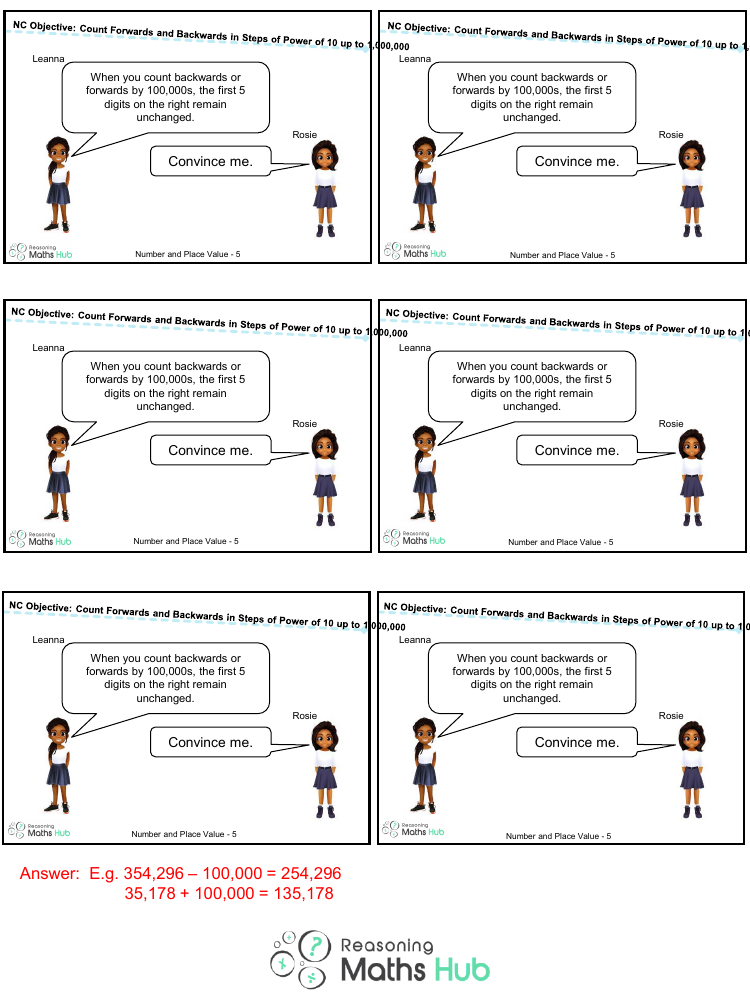Count Forwards And Backwards In Steps Of Power 10 - Reasoning

Maths Resource Description
In the realm of number and place value, particularly for Year 5 students, an intriguing concept to master is counting forwards and backwards in steps of powers of 10, such as 100,000. This mathematical reasoning exercise highlights an important pattern: when adding or subtracting 100,000 to or from a number, the first five digits on the right-hand side of the number stay the same. For example, if we take the number 354,296 and subtract 100,000, the result is 254,296. Similarly, if we start with 35,178 and add 100,000, the new number is 135,178. The unchanged nature of the last five digits is a consistent observation across such calculations.
Students like Leanna and Rosie are prompted to delve into this numerical pattern and provide justification for why it occurs. To "convince" someone of this fact requires understanding that the number 100,000 has six digits, with the first digit being 1 followed by five zeros. When this number is added to or subtracted from another number, it affects only the digit in the hundred thousands place, leaving the remaining digits untouched. This principle of place value ensures that when counting in such large increments, the digits representing units, tens, hundreds, thousands, and ten thousands do not change, thereby maintaining the stability of the first five digits on the right side of the number.